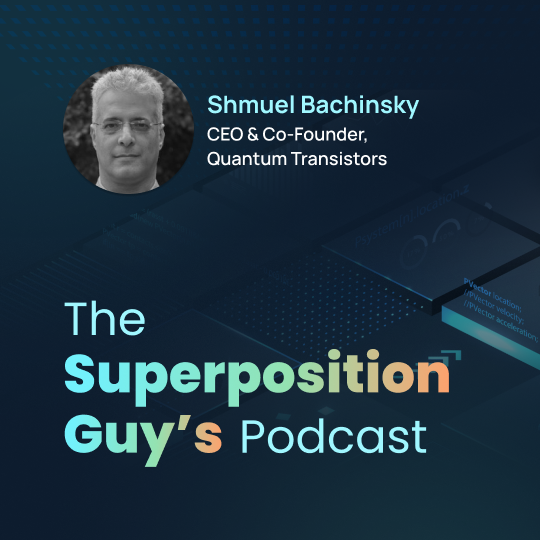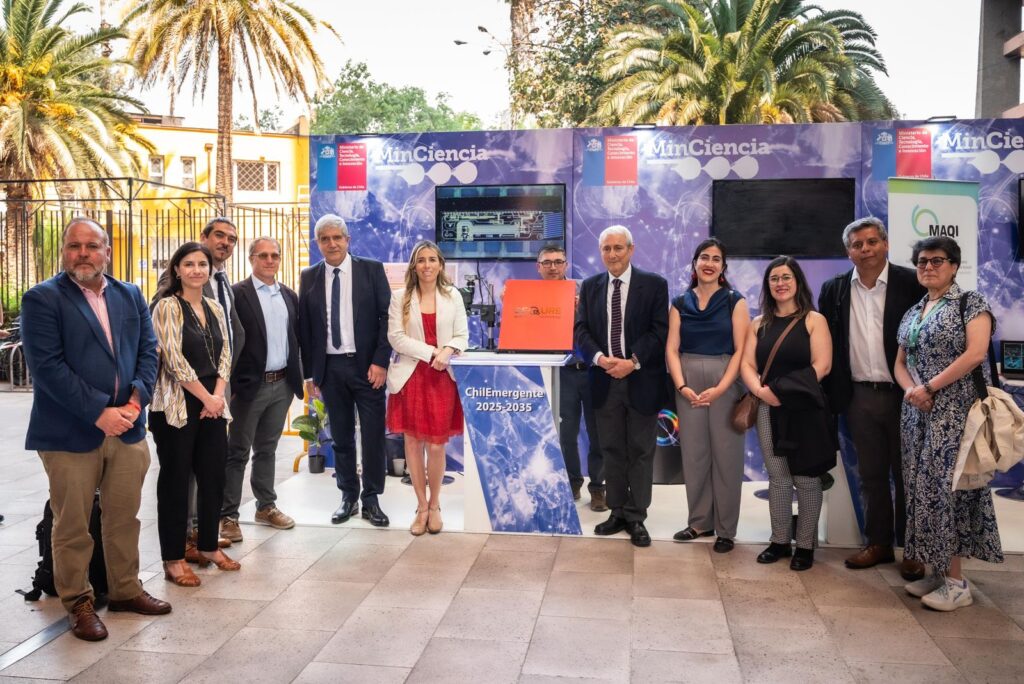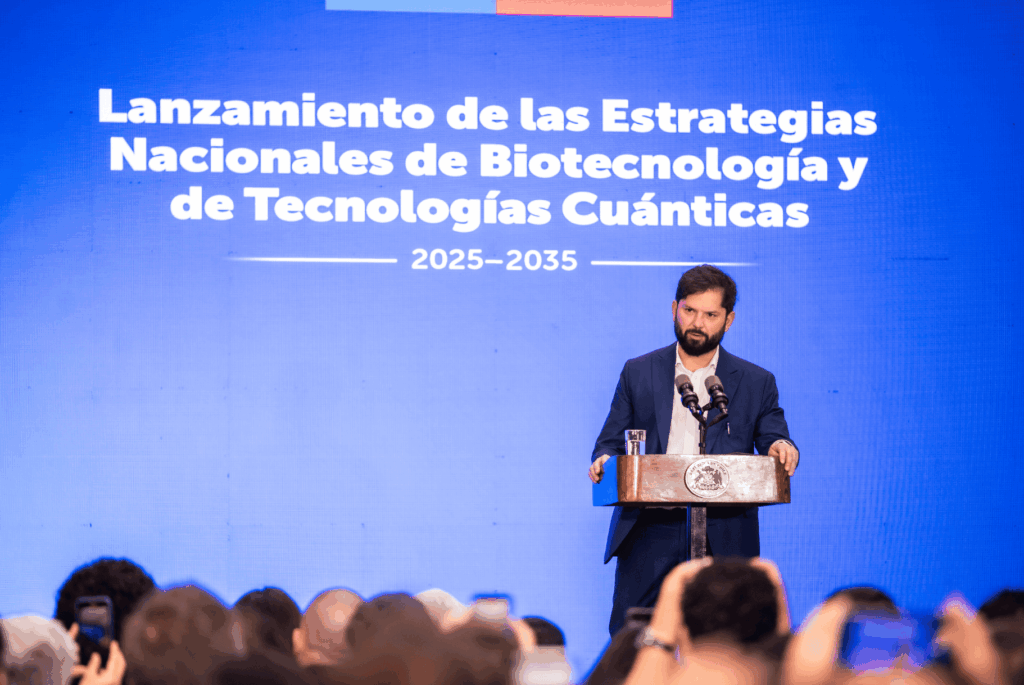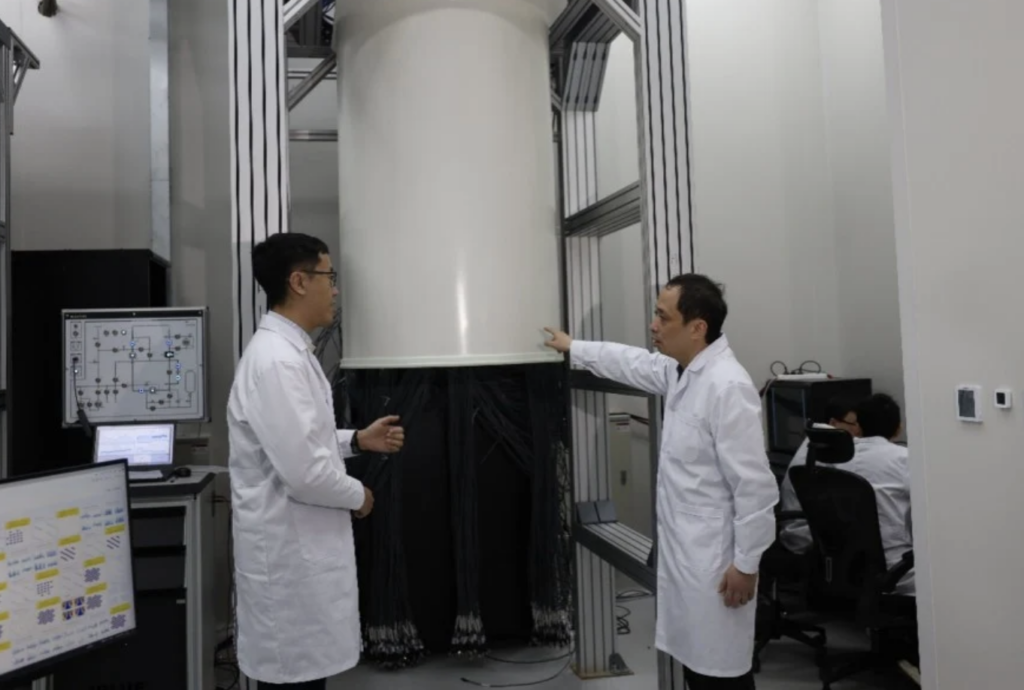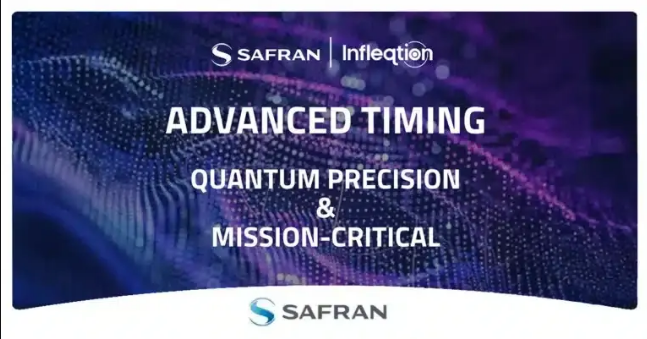“The Superposition Guy’s Podcast”, hosted by Yuval Boger, Chief Commercial Officer at QuEra Computing
Shmuel Bachinsky, CEO and co-founder of Quantum Transistors, a second-generation quantum computing company aiming to build the “8086” of quantum computing, is interviewed by Yuval Boger. Shmuel discusses the company’s focus on using diamond-based solid-state spin qubits combined with silicon photonics and CMOS control planes, aiming to build a scalable quantum processor. He contrasts this approach with the challenges of silicon-based qubits, emphasizing higher operating temperatures and the potential for better two-qubit gate fidelity. Shmuel shares insights on scalability, funding, and future growth, and much more.
Listen on Spotify — here

Full Transcript
Yuval: Hello Shmuel, and thank you so much for joining me today.
Shmuel: Welcome. Thank you.
Yuval: So Shmuel, who are you and what do you do?
Shmuel:My name is Shmuel Bachinsky and I’m CEO and co-founder of Quantum Transistors. And Quantum Transistors is a second-generation quantum computing company.
Yuval: So what’s the first generation? What’s the difference between a first generation and second generation?
Shmuel: Well, I figured you were going to ask that. Well, I’d say probably the main difference is when you started and what you’re building. So the first generation started somewhere in 2012, 2013, some even as late as 2015. And they had absolutely no experience to rely on. So they all went for modalities they thought would get them something, but they didn’t really have the experience to rely on. Now there was a first and a half generation, you know, companies started around 2018, 2019—people who could learn a little bit from the mistakes made by their forebears. We started in 2021. And I think the thing that makes us a second generation more than anything else is the fact that we rely on the first generation to succeed and get the early adopters. We plan on getting to market after crossing the chasm. So we’re planning for not the first deliveries to market, we’re planning for two or three years after that.
Yuval:We know each other for many years. Well, so allow me to ask you this way. So you’re saying that you’re late to the market, basically. You started later. You know, I think I heard that the first trapped ion experiment was in 1996. And superconducting was that and silicon qubits. People have been working on it for 20 years. So what is the modality that Quantum Transistor is based on? Where does it come from? And how long have people been working on it before you started the company?
Shmuel:So at the base of our concept is basically building quantum hardware using semiconductor technologies. And the modality were, I guess, if you want to define a modality, it’s probably solid-state spin qubits, but usually when people hear that, they think about silicon, and we’re not working with silicon. We think the material choice is probably one of the most important ones you can make when you are starting something like building quantum hardware. And silicon, in our view, is not going to get us where we want to go. Now we are trying to build the 8086 of the quantum world. So a real quantum processor, an integrated single-chip quantum processor that talks to the world only using the host interface, but everything else is inside the chip. Had we gone to use silicon right now, there are too many roadblocks, so we are relying on diamond qubits. We’re relying on solid-state spin qubits within diamond. Diamond enables us a higher operating temperature, which might—again, there is a lot of risk involved—but we’re building it so it all goes into the same package together with a control plane from CMOS, diamond qubits, and silicon photonics.
Yuval:When people build silicon qubits, one of the arguments that they propose is, look, silicon has been around forever, many people in the world know how to create silicon chips with billions and billions of gates, and therefore once we get one, two, three, four qubits in the right way, now the path to doing four billion qubits is easy or easier. Would you say the same about your approach?
Shmuel:Well, I’d say this is a very general statement and it probably relates to anything you do with semiconductor technologies. I mean, if you’re sending a GDS file to a tier-one fab and your design is good, you’ll get back something that’s very dense. Now, how useful it is and how well the yield provides and the performance, all of that still has to be determined. Yes, for classical computing, we know how to use silicon very well. So you can be fairly sure that if you send a good GDS file, you’ll get back a working device. For quantum technologies, I don’t think silicon has the same meaning as it has for classical computing. So you need to look at the material, you need to look at the properties and say, will silicon ever be as useful for quantum technologies as it is for classical computing? And right now, we don’t see that happening. So we didn’t go that way.
Yuval:And you’re describing a hybrid approach, right? Where the qubits are based on diamond and the control plane is CMOS. So it’s almost like going back to the classical world, a mixed analog-digital IC?
Shmuel:Yeah, it’s a little worse than that actually because you forgot to mention the third layer, which is the connectivity—the silicon photonics layer, which is neither CMOS in our electronics nor diamond. So our chip really has three technologies that have to come together to work. And that’s because the qubits emit coherent photons. So the solid-state defects in diamond are emitting coherent photons, and we entangle them, we perform computation using those photons. Those photons are emitted into the silicon photonics chip. So we’re building a PIC, photonic integrated circuit, and that goes to a tier-one fab that builds silicon photonics. In-house, in our own fab, we’re fabricating our own diamond qubits, and the first mission is to connect those two together. That will provide us with the scalability and a price with, basically, a proof that the modality works. Because we invented the modality, there isn’t much around to do that. When we want to scale, and we can’t push controls from outside the chip into the chip, which will be very fast, like tens of qubits, then we’ll have to add the basics for CMOS inside. That will depend on the operating temperature of the first two planes because for CMOS to work, you need to be above a certain temperature. And that’s where silicon qubits fail because they have to be at one Kelvin and CMOS control cannot work well below 20 Kelvin, so they’re stuck with the same problem IBM is stuck with today—having the one Kelvin cryostat and having to push in a lot of control. I don’t see how that’s going to work.
Yuval:So will your chip have two temperature zones essentially, or is diamond allowing you to work in one? What would that temperature be?
Shmuel:We don’t know yet, but we’re looking to make the diamond, silicon photonics, and CMOS all work together at 77 Kelvin. This is very ambitious, but as long as the CMOS works, we’re happy. Even if the diamond requires us to go down to, say, 40 Kelvin or 45 Kelvin, it’s still doable as long as all three can work in the same package and be cooled in the same cryostat.
Yuval:In the quantum world, 70 Kelvin sounds like Sahara, right? I mean, relatively speaking.
Shmuel:Yes.
Yuval:Do you anticipate that this chip would be able to deliver portable quantum computers, or would you still expect them to be in a data center with a whole bunch of infrastructure around it?
Shmuel:Portable is such a flexible word. I mean, there is portable in a semi-truck, there’s portable in your pocket. There’s lots of portables. So I expect the end product, the server—the computer itself—to be on the scale of maybe four to six U when we get to several thousand qubits, because you still have to build cooling around the chip. Even if it’s 77 Kelvin, it’s still liquid nitrogen. There still has to be a gas canister, there still has to be a closed-loop system to do all the… you know, there’s still hardware, okay? So even if the chip is really only looking like a small GPU or a nice little Intel processor, you’re still going to have to build a motherboard around it and provide everything else it needs. So four to six U is my guess. We’re still about three years away from that, but that’s as portable as I think it needs to get right now. Twenty years from now? I don’t know. Probably.
Yuval:Aquantum computer in your pocket.
Shmuel:In your phone, actually, I think a quantum computing core in your phone, 20 years from now, I’ll put money on that.
Yuval:But that phone is in your pocket anyway, so…
Shmuel:Yeah.
Yuval:I know you don’t have a product yet, but you’re working on one. Could you give me a little bit of the target specs in terms of qubits or fidelity or connectivity? What can you share?
Shmuel:Well, the connectivity is photonic. So basically, if we can get two photons from two qubits to meet, it doesn’t matter if they’re on two different chips or in the same chip. All connectivity inside the chip is photonic, and there’s going to be fiber ports coming out of the chip to connect it to a different chip side by side. I’m not going to say all-to-all until I test it, but there’s really no reason to assume anything else. I’ve heard people talking about, “I’m going to have one computer here and the other one at the other end of town, and I’m going to connect fiber between those.” I’m not going to make those claims. I don’t know if those claims are even practical, but it really doesn’t matter. If you can put two or three processors on a single motherboard and you can connect them with five centimeters worth of fiber and it works, I’m happy. I don’t really need to have a global network of quantum computers. If it’s sitting in your data center and it works, that’s why I’m happy. In terms of density, we’re looking for our first-generation technology—what we’re developing right now—to be able to fit 10,000 qubits in a 20 millimeter by 20 millimeter die. So the density is definitely breaking everything else that’s out there right now, at least for the size of the chip that we’re planning. When you’re looking at 20 millimeter by 20 millimeter, I don’t see any other technology right now that can hit those numbers, and those numbers can improve fairly rapidly in the consequent generation because they’re not depending on the quantum elements. Right now, what sets the density limit is the silicon photonics technology, and that has nothing to do with the quantum technology. So if we can get better silicon photonics from the fabs, the density will increase without us doing anything.
Yuval:So when people think about different modalities, they look at several criteria. They look at the number of qubits and scalability and connectivity and gate fidelity and gate speeds and operating temperature, and so on. But it sounds like what you’re saying is that the advantage of your approach would be the number of qubits that are close to being fully connected. Is that correct, or do you see other advantages relative to other approaches?
Shmuel:I don’t want to put the buggy in front of the horse, but we’ve forecasted the two-qubit gate fidelities that we expect to get from this technology, and obviously, up until we have the full chip and can measure it, it’s just forecasts. But we think it’s going to be probably one order of magnitude better than what the first generation has been able to demonstrate. I don’t expect to know everything that’s going on in every company out there. I think most people hold their real data fairly close to their chest, so maybe just for lack of knowledge, but we’re looking at three and a half nines for two-qubit fidelities, and we’ve measured five nines fidelity for single-qubit gates. So basically, putting the qubits in an enclosed fashion inside the chip and having them very resistant to temperature is improving the performance. It’s not ruining the performance—it’s actually improving the performance. So we expect to be at least as good as anything else out there because, at the end of the day, we’re still using atoms as qubits, so it doesn’t matter if our atoms are inside a diamond matrix and your atoms are inside of a vacuum. We expect to get as good a performance as anybody else. We might be better in some areas because it’s enclosed and has nothing to do with the outside world.
Yuval:Do you envision this being used for any particular application, or really as a general-purpose, 10,000-qubit quantum computer?
Shmuel:Well, when I said we were building the 8086 of the quantum world, it’s because our concept is basically becoming Intel. So we’re not building any software. We’re not going to be building any applications. We’re not going to be building any middleware. We’re basically going to be building the processor. And I think by the time our processor is ready, the value chain will have matured enough that we will have plenty of partners for middleware, operating systems, applications. We’re building a universal computer, same as the 8086. Nobody knew what the 8086 would do in the real world when it came out, and software grew out of that.
Yuval:One of the challenges when entrepreneurs say “we’re going to be the Intel of something,” is that sometimes Intel will be the Intel of something. So how worried are you about Intel being the Intel of quantum?
Shmuel:If I knew that Nvidia was working on this, I’d be more worried. And I’m not… you know, I don’t want to insult Intel, but Intel’s got a lot of problems right now. And I know they’re working on their own quantum hardware. I think they went the silicon route, which is obvious, right? For Intel to go the silicon route is natural. And, you know, there are so many good startups out there doing some great work. You work for one of them—one of the ones I most appreciate in this marketplace, one of the ones I think the most of. So, you know, I wouldn’t be worried so much about Intel, but there are a lot of other companies out there that are doing really good work, so, you know, somebody will get there.
Yuval:Tell me a little bit about the company. I mean, you mentioned when you started working. How large is the company? How are you funded? What are you looking for in the next stages of growth? What can you share?
Shmuel:Right now, we’re basically doing the work of proving the modality is valid. So, small-scale computation—it doesn’t really matter for us whether we build 10 or 20 qubits in the first chip. We just want to see the whole thing works, and we want to measure the performance. And again, like you said, once you have several dozen of them working, the scaling is not the issue. The whole issue is, can you get this thing? The company is not very large. We’re actually going for quality more than quantity right now. We’re about 20 people, and we’re getting a high quality of people. So a smaller team with a higher grade of people gets the problem solved faster. We’re well-funded. We’re supported by four VCs. And right now, we have enough money to do what we need to do until the next stage of growth. I guess once the first chip is out there with any number of qubits and it works, the company will have to pretty much explode. Triple, quadruple in a fairly short amount of time, raise a whole lot more money. The one thing about building a semiconductor product is that it gets very expensive, very fast. So, if you’re asking how much money a company would need to actually reach full production and be able to send chips out there, my guess would be the hundreds of millions. But there are ways—you need to get there with the right milestones and the right proof. You don’t just get the hundreds of millions right on the first day.
Yuval:You mentioned earlier, if I heard you correctly, that you’re building your own little fab on the silicon photonics. Why is that required? I mean, aren’t there people out there that know that you can’t create silicon photonics chips?
Shmuel:Our fab is not for silicon photonics. In silicon photonics, we’re completely fabless. We design the chip and we send GDS files to our partner. It’s a premium facility, a tier-one facility, and you get the best chips out of there. For silicon photonics, you’re absolutely right—we don’t need to do that. Where we need to do that and where we want to keep control of the IP very, very closely is with the diamond qubits. We have some core IP around how to operate and control and make those diamond qubits so they fit within the system. And we’ve finished building our own diamond fab here in our facilities, and we’re actually using that. This is where we’ll make it until significantly way down the road.
Yuval:There’s been a lot of talk recently about export controls for quantum technology. How worried are you about that?
Shmuel:Worried? I’m not worried at all. I knew that from day one. I wasn’t ever expecting to be able to ship this product without a whole bunch of papers. So they actually put a lot of thought into the formation of the company. I got offered a lot of money from areas in the world that would have hindered the company’s ability to do business in the future, and we had to give up on—we had to say no to—those amounts of money, which would have been very easy and very fast to raise. But the geopolitics around quantum computing are too complex for startups to deal with. So we had to limit ourselves to Europe, the US, and Israel in terms of funding. And I will not be surprised if export licenses are a very big part of our sales process.
Yuval:It sounds like you’ve been doing this for a number of years now. But what’s new? What have you learned over the last, say, six months that you didn’t know before about the quantum world?
Shmuel:I don’t know if I would say I’ve been doing this for a number of years. I mean, somewhere in the middle of 2021, I had no idea what quantum computing was. And then I got asked to do this, and I had to learn in a hurry. So I keep learning all the time, and I’m still learning. What have I learned in the past six months that I didn’t know before? You know, when you do a second-generation company, you rely on the first generation to be successful. And for a while, it was kind of touch and go. I didn’t really want to do the whole market education. I need people to sell quantum computers, to have applications, to realize that there’s a lot of value in quantum computers before I ever get to market. So in the last six months, my level of confidence about the success of the first generation has risen steadily. If, let’s say, a year ago I wouldn’t have been able to say when enterprises will start buying quantum computers, today I’m fairly certain that somewhere within the next 12 months, we’ll start hearing about both products that start tickling enterprises to get in the game and start seeing the first enterprises buying them. The early adopters are coming between 12 and 24 months, I think. But again, I’m not shooting for the early adopters. I’m shooting for crossing the chasm.
Yuval:Very good, Shmuel. So as we come to the end of our conversation today, I wanted to ask you a hypothetical. If you could have dinner with one of the quantum greats, dead or alive, who would that be?
Shmuel:I’m a very consistent listener of your podcast. And I have heard, I guess, many people answer that question—Peter Shor. Most of them were physicists, and they wanted to meet physicists. So I don’t really know. I’m on the business side, and there’s really no great on the business side, you know? So for me, a quantum great doesn’t yet exist. Yes, the physicists are great, but I don’t know if I really want to sit down for dinner with them.
Yuval:But there are definitely business greats. I mean, those that started Intel or Nvidia or Ford or Tesla.
Shmuel:Yes. If I could sit down with Elon Musk or Jensen Huang, I would be delighted, but you can’t really call any of them one of the quantum greats, right? But yes, definitely those two. Jensen even more than Elon.
Yuval:I mean, I think Elon tries to be in multiple places at the same time or something.
Shmuel:So yeah, you could call him a quantum by virtue of teleportation, I guess. But yeah, Elon is a very interesting man, but I think if I wanted to learn something about how to do what I’m doing now better or how to do it right, I think Jensen’s the guy that you want to talk to.
Yuval:Very good. Shmuel, thank you so much for joining me today.
Shmuel:Thank you for having me.
To subscribe to the audio podcast, please Spotify here

